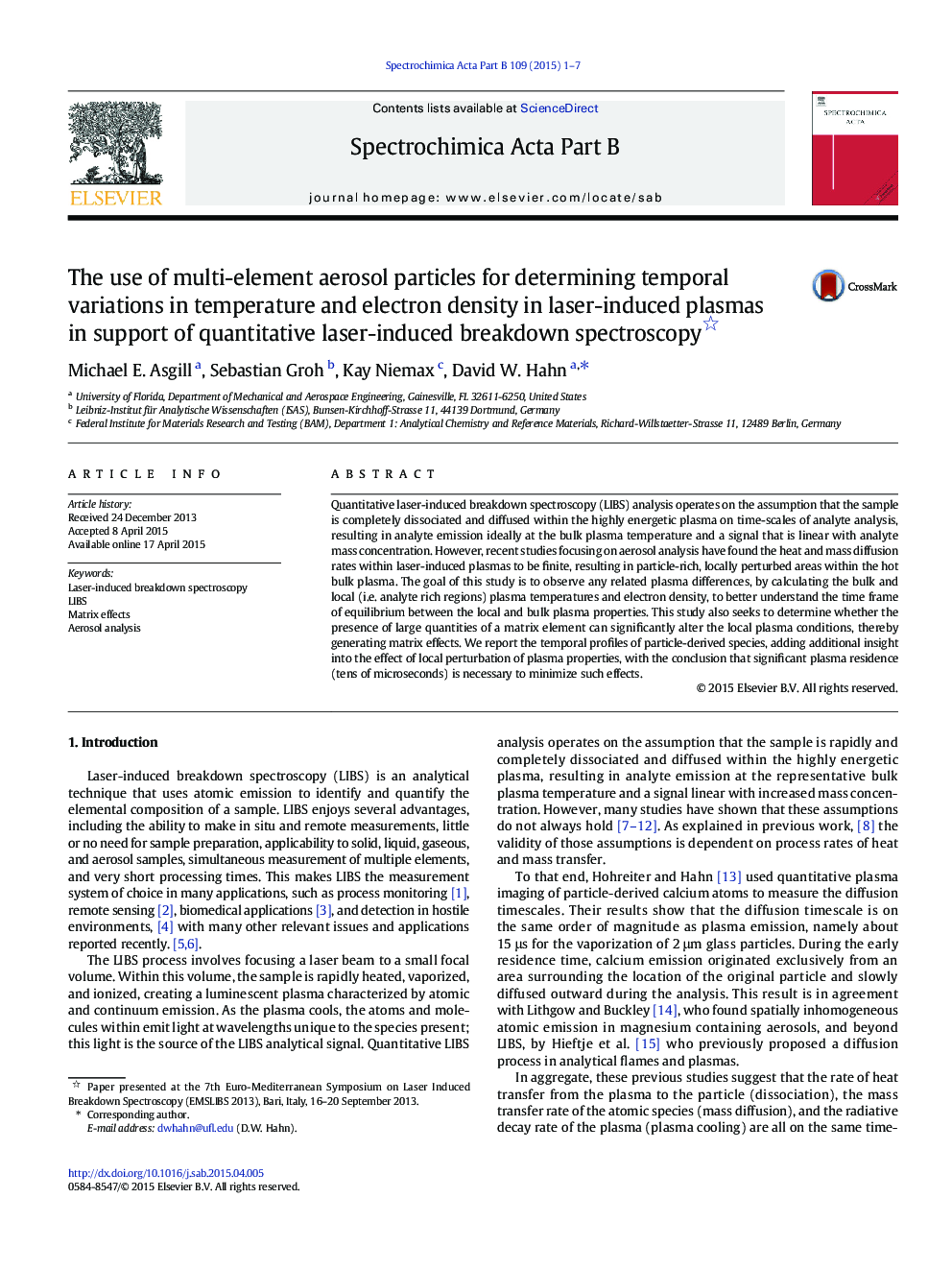| Article ID | Journal | Published Year | Pages | File Type |
|---|---|---|---|---|
| 1240053 | Spectrochimica Acta Part B: Atomic Spectroscopy | 2015 | 7 Pages |
•Laser-induced plasma equilibrium is explored for gaseous and particle-derived species.•Plasma matrix effects are explored in the context of plasma transport properties.•Plasma residence time is concluded to be of significant importance for quantitative analysis.
Quantitative laser-induced breakdown spectroscopy (LIBS) analysis operates on the assumption that the sample is completely dissociated and diffused within the highly energetic plasma on time-scales of analyte analysis, resulting in analyte emission ideally at the bulk plasma temperature and a signal that is linear with analyte mass concentration. However, recent studies focusing on aerosol analysis have found the heat and mass diffusion rates within laser-induced plasmas to be finite, resulting in particle-rich, locally perturbed areas within the hot bulk plasma. The goal of this study is to observe any related plasma differences, by calculating the bulk and local (i.e. analyte rich regions) plasma temperatures and electron density, to better understand the time frame of equilibrium between the local and bulk plasma properties. This study also seeks to determine whether the presence of large quantities of a matrix element can significantly alter the local plasma conditions, thereby generating matrix effects. We report the temporal profiles of particle-derived species, adding additional insight into the effect of local perturbation of plasma properties, with the conclusion that significant plasma residence (tens of microseconds) is necessary to minimize such effects.
